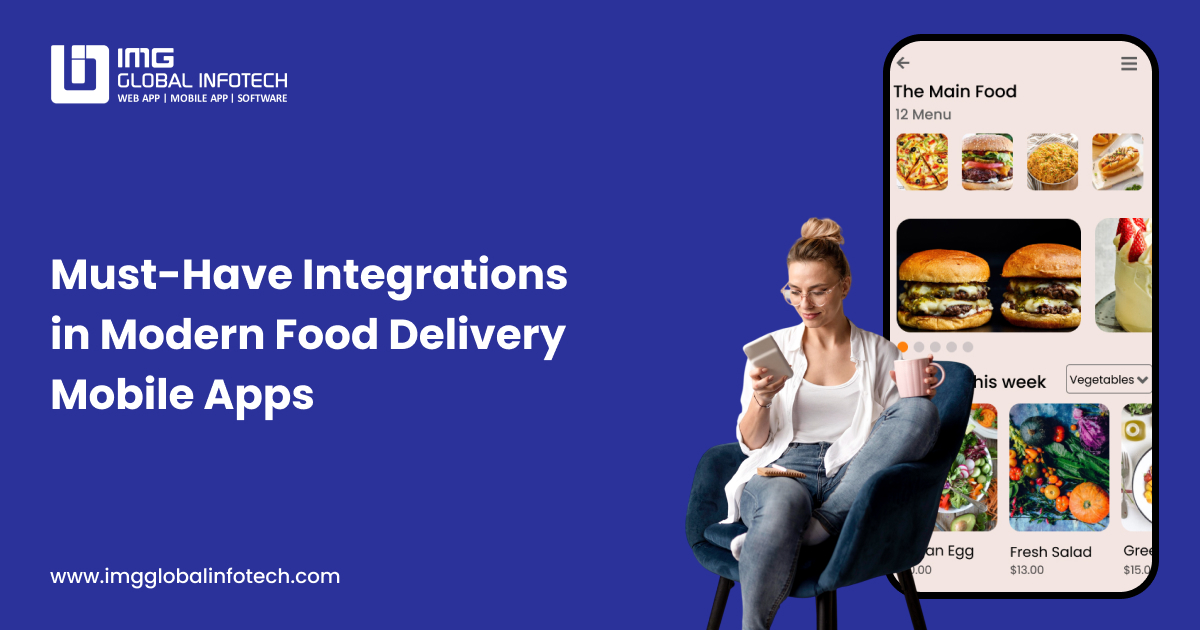
Food delivery apps have come a long way from basic order-taking platforms. In 2025, they are smart, fast, and deeply integrated with advanced technologies. Customers now expect more than just a way to order food. They want speed, convenience, and real-time updates at every step.
The rise of online food delivery app development has made integrations more important than ever. Each integration plays a role in improving how users interact with your app, how restaurants manage their kitchens, and how delivery teams complete their tasks efficiently.
Smart integrations enhance user experience, streamline operations, and boost revenue. They help customers track their orders live, pay safely using different methods, talk directly with riders, and get personalized food suggestions.
For businesses, seamless integrations mean smoother restaurant onboarding, fewer canceled orders, and better insights into daily performance. A tech-forward solution built by the on-demand food delivery app development company gains a competitive edge by offering what users now consider essential.
This blog explores all the must-have integrations your modern food delivery mobile app needs to succeed in 2025.
2. Core Integrations Every Food Delivery Mobile App Must Have
2.1 Real-Time GPS & Live Tracking
Customers love tracking their food in real time. GPS integration allows users to see where their order is and when it will arrive. For delivery agents, it optimizes routes and reduces travel time. Features like geo-fencing and ETA updates enhance both user trust and delivery accuracy.
2.2 Multi-Payment Gateway Integration
Offer your users multiple payment options like UPI, debit/credit cards, digital wallets, and Buy Now, Pay Later (BNPL). Ensure your app follows PCI-DSS compliance for safe transactions. Also, support easy refunds and split payments for group orders.
2.3 Push Notifications System
Push notifications keep users informed. From order confirmations and delivery alerts to personalized offers and abandoned cart nudges—this tool improves both retention and sales.
2.4 In-App Chat and Calling Features
Allow users to chat or call delivery partners or support teams directly from the app. Combine this with chatbot integrations to handle FAQs or order-related issues without needing human agents every time.
2.5 AI-Powered Recommendation Engine
Use AI to suggest meals based on a user’s order history and preferences. Smart recommendations help in upselling and improve overall engagement by showing the right food at the right time.
2.6 Rating & Review Mechanism
Let customers rate their food and delivery experience. This feedback builds trust and helps restaurants improve. Include moderation tools and allow businesses to respond to reviews.
2.7 Smart Inventory & POS Integration for Restaurants
Restaurants should be able to sync their POS and inventory systems with the app. This ensures that only available items are shown to users, reducing order cancellations due to stock issues.
2.8 CRM & Marketing Automation Tools
CRM tools track customer behavior and personalize their experience. Integrated platforms like MoEngage or Clevertap can send targeted deals, manage loyalty programs, and improve retention.
2.9 SMS, Email & WhatsApp API Integration
Send order confirmations, OTPs, and updates via SMS, email, or WhatsApp. Tools like Twilio, SendGrid, or Gupshup make this possible and scalable.
2.10 Admin Dashboard & Analytics Integration
Provide admins with data-driven dashboards. Track real-time metrics like active orders, total earnings, delivery performance, and customer behavior. Heatmaps and charts help in smarter business decisions.
Also Read – How to Create a Food Delivery App? – A Practical Guide
2.11 Voice Assistant Integration (Optional)
Let users place or track orders using Alexa, Siri, or Google Assistant. This improves accessibility and offers a hands-free experience.
2.12 Regulatory & Security Integrations
Ensure your app complies with GDPR, HIPAA (for health-focused meals), and CCPA. Add secure login methods like OTP or 2FA, and include contactless delivery protocols for safety.
2.13 Emerging Integrations (Optional but Future-Ready)
- Drone Delivery APIs: Prepare for the future of last-mile delivery.
- Blockchain Payments: Accept crypto payments for early adopters.
- Sustainability Tools: Track carbon emissions and promote eco-friendly delivery options.
2.14 Future-Ready Integrations for 2025
- Drone Delivery APIs: As drone deliveries grow, integrating APIs from drone services can prepare your app for faster, autonomous delivery.
- Web3 & Blockchain Payments: Integrate crypto wallets and offer transparency with blockchain-based order verification.
- Sustainability Trackers: Let users view the carbon footprint of their delivery. Encourage them to choose greener options and reward them for doing so.
3. Conclusion
Integrations are essential in modern food requirements.. Features like live tracking, multiple payment options, smart search, real-time updates, and AI recommendations offer a smooth and reliable user experience.
Advanced integrations like drone delivery, blockchain payments, and carbon tracking also make your app future-ready and competitive.
Choosing the right online food delivery app development company makes all the difference. From planning to integration, every detail matters. Whether you’re a startup or an enterprise, work with a team that understands your vision and can deliver results.
IMG Global Infotech is a trusted food app development expert. As a leading best food delivery app development company, we build apps that are fast, scalable, and packed with the latest features.





